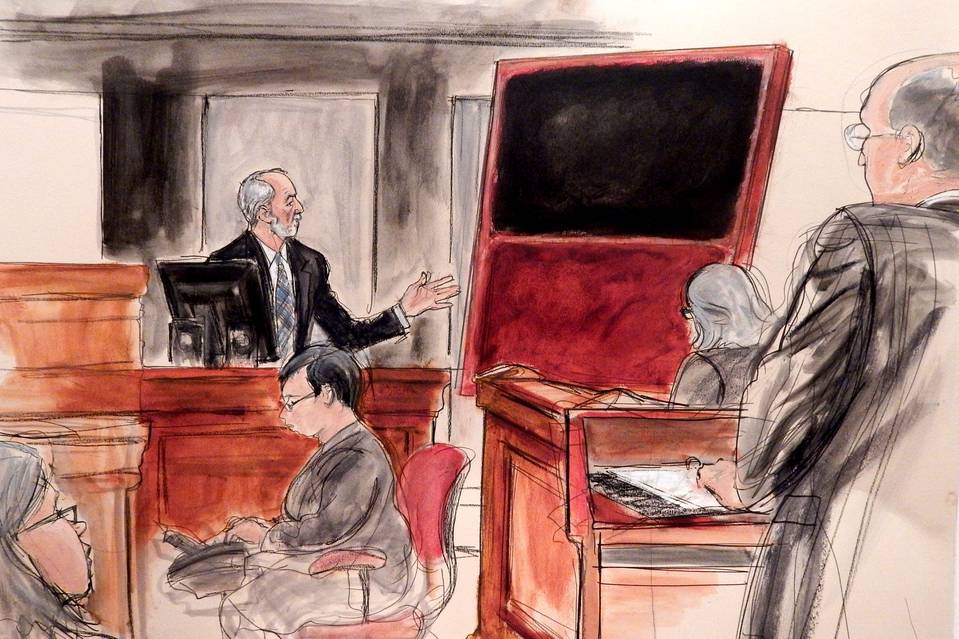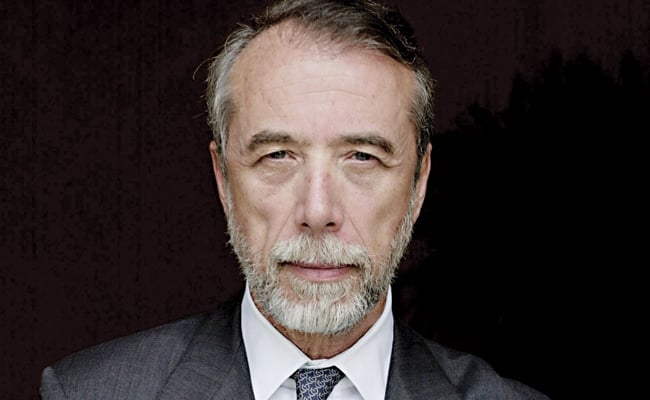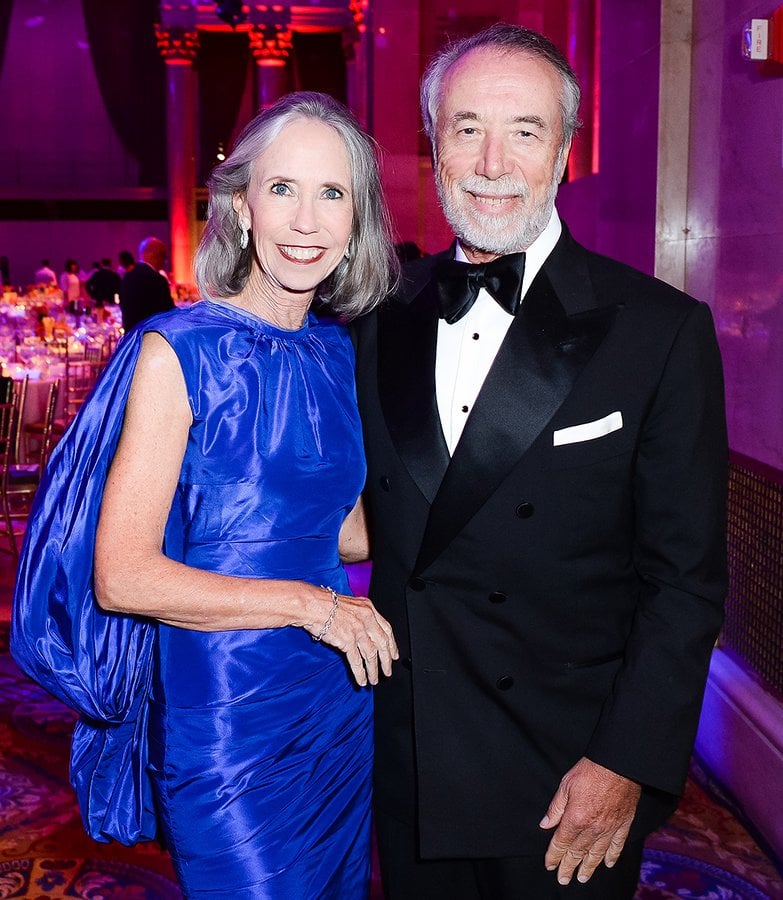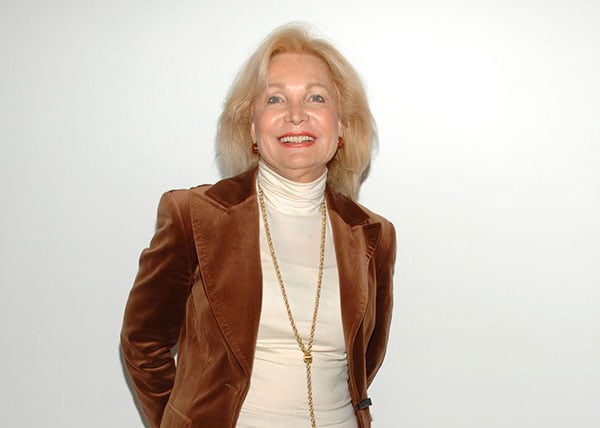Art World
Domenico De Sole’s Background Questioned on Day Four of Knoedler Forgery Trial
The defense grilled De Sole about Freedman's 11 Rothko experts.

Photo: Elizabeth Williams, courtesy ILLUSTRATED COURTROOM.
The defense grilled De Sole about Freedman's 11 Rothko experts.

Sarah Cascone

The drama continued in Manhattan on Thursday at the trial of New York’s Knoedler & Company gallery, as plaintiff Domenico de Sole spent a second day on the witness stand, accusing defendant and art dealer Ann Freedman of fraud in the 2005 sale of a painting, for $8.3 million, that was purported to be by Mark Rothko but turned out to be fake.
Despite the massive scandal surrounding the demise of the gallery, which shuttered abruptly in 2011 following the discovery of an $80 million-dollar art forgery ring, the current case is the only lawsuit connected to the disgraced gallery to come to trial to date.
In January 2005, De Sole and his wife Eleanor finalized a deal to buy what they believed was an untitled 1956 Rothko. The canvas in question made a surprise appearance in court on Wednesday, January 27, in conjunction with impassioned testimony from De Sole.
There were several heated moments on Thursday as well, with De Sole and the defense attorney repeatedly butting heads as they attempted to speak over one another, and Judge Gardelphe angrily reminding the defense to raise “questions, not arguments.” Over and over, De Sole stressed that Freedman “did all the talking” during the sale and “said the painting was beautiful, a masterpiece.”
De Sole was allegedly told that the Rothko was one of two previously undiscovered works, the other by Jackson Pollock, that were part of a Swiss collection. He was told that the owner, originally from Mexico, had purchased the works directly from the artist with the assistance of esteemed dealer and art adviser David Herbert. He had since died, and his son, who wished to remain anonymous, was selling the art. (A key point in the case is whether Freedman told anyone that she personally knew the fictional Swiss collector, or if a personal relationship between the two was only implied.)

Collector Domenico de Sole, who is now chairman of Sotheby’s board, is suing over a Mark Rothko painting that turned out to be fake.
Photo: Courtesy of Sothebys.com
In fact, the purported masterpieces were being sold by Knoedler on behalf of Long Island art dealer Glafira Rosales. She allegedly conspired with her boyfriend, Jose Carlos Bergantinos Diaz, and his brother, Jesus Angel Bergantinos Diaz, to pass off works from a Chinese painter based in Flushing, Queens, as Abstract Expressionist originals by the likes of Rothko, Pollock, Willem de Kooning, Franz Kline and Robert Motherwell.
In 2013, after being indicted in a criminal case, Rosales cooperated with federal prosecutors and pleaded guilty. She is awaiting sentencing. The Diaz brothers were arrested in Spain in April 2014, but have not yet been extradited to the US. The forger, Pei Shen Qian, who was reportedly paid minimal sums for his work, has fled to China.
The defense seemed eager to pin the responsibility for determining the painting’s authenticity on the De Soles and Jim Kelly, the art dealer who helped arrange the transaction on the couple’s behalf.
The defense suggested that De Sole should have been suspicious of the list of 11 Rothko experts Freedman had cited as having approved the work, because it would seem like overkill to have more than a few people involved in such a process. Kelly effectively debunked this line of argument in the afternoon when he pointed out how impressed he was with Freedman’s apparent due diligence.
“She had done such a good job organizing these experts,” said Kelly. Christopher Rothko, the artist’s son, Rothko expert David Anfam, and Laila Nasr, a curator at the National Gallery of Art in Washington, DC, were among those cited by Freedman, and were all announced as potential witnesses during the trial’s opening on Monday.

Eleanore and Domenico De Sole.
Photo: Matteo Pandoni, Joe Schildnorn, courtesy BFA.
Another key to the defense’s case appeared to be whether or not De Sole actually read the letter from Freedman sent before the purchase to reiterate her claims about the painting’s provenance and authenticity. De Sole was unable to definitively recall having personally read the letter, and had attested in a pre-trial deposition that he had not. “This forms such an important part of the lawsuit,” the defense claimed, for which the Judge Gardelphe quickly reprimanded him.
Although the defense pointed out that Freedman’s letter only claimed that the 11 experts had “viewed” the painting, not that they had authenticated it, both De Sole and Kelly were fairly certain that the dealer had used the word “authenticated” during their verbal conversations. Kelly noted that it was a “very stellar” list of experts, telling the court “it meant to me that these people had attested to its authenticity, that they agreed with Ann.”
The defense also attempted to draw a parallel between De Sole’s job as a Gucci executive and Freedman’s role as an art dealer, asking De Sole if Gucci salespeople were in the practice of assuring customers of the authenticity of their handbags. “We never were in the business of selling fake products,” said De Sole. “If there was a problem, we’d give the customer a refund.”
Just as a Gucci customer would never expect the luxury brand to peddle knock-off goods, De Sole had full confidence in the good name of the Knoedler gallery and Freedman, saying, “It never crossed my mind that this was a fake painting.” The defense also alluded to De Sole’s law degree, asking if he was a lawyer. “No,” said De Sole, “because I’ve been selling handbags for the last 35 years.”
Much of the afternoon was dedicated to testimony from Sharon Flescher, the executive director of the International Foundation of Art Research (IFAR). In late 2001, the organization’s art authentication research service was asked by collector Jack Levy to authenticate a purported Jackson Pollock he had purchased from Knoedler.

Sharon Flescher.
Photo: Paul Bruinooge, courtesy Patrick McMullan.
As soon as Freedman got word of Levy’s intentions, she called up Flescher to say that Knoedler would once again be making an annual contribution to the organization—even though it was just nine days before the year’s end—and to talk about Levy’s painting. Flescher’s notes from that conversation stated that Freedman alluded to experts who had “blessed” the painting, and claimed that it had passed to the Swiss collector through Filipino-born artist Alfonso Ossorio, a close friend and important patron of Pollock’s. (With regard to this painting, there was no mention of Herbert.)
Ultimately, IFAR was unable to find any evidence to support Freedman’s claims about the work’s provenance, noting in its final report that it was “inconceivable” that they had missed documents that linked the painting to Ossorio, who had worked closely with those compiling the artist’s catalogue raisonné. A panel of anonymous experts were ultimately split on whether or not the work appeared authentic, with one quoted in the report as saying, “It doesn’t ring true.”
Although IFAR did not definitively rule the Levy Pollock a fake, the implication was certainly that its findings should have been enough to cast doubt on all of the works Rosales was selling. (Previous testimony had already covered fake Richard Diebenkorn paintings that came to Knoedler via Rosales, and the doubts about their authenticity expressed by the artist’s daughter long before they were ever sold.)